Panshanger Aerodrome
Historical Summary
By Robert Gill
1940
Some 248 acres of agricultural land which was part of the Panshanger estate was released to the Air Ministry under the terms of the Emergency Powers Act (1939). The Air Ministry gave de Havilland at Hatfield the authority and responsibility to construct a decoy aircraft factory to divert enemy bombers from their facility in Hatfield some 6 miles away. The decoy factory was constructed and then in use from November 1940, the fields around being used as a Reserve Landing Ground (known as Holwell Hyde) for flying training. The decoy factory was constructed on what is now Moneyhole Lane Park.
1941
1 Elementary Flying Training School (1EFTS) complete with de Havilland Tiger Moths occupied buildings and hangers erected on the north side. 1 EFTS were responsible for training Army and Air Force pilots.
1942/1943
Further expansion with additional Tiger Moths and buildings in the south east corner.
1943
Aerodrome renamed RAF Panshanger.
Post 1945
Training continued to be supervised by de Havillands via the London Aeroplane Club (civilian flying) on the north side and in the south by 1 Reserve Flying School (1RFS) flying at weekends in Tiger Moths and Avro Ansons. A gliding school occupied part of the site until the early 1950s run by the Air Training Corps.
1950
de Havilland Chipmunk aircraft introduced.
1953
The Reserve School closed and civilian flying took over the facility following sale of the land into private hands. Periods of activity and lulls into disuse followed but the aerodrome remained a training facility. WGC Corporation purchased large areas of the land on which the aerodrome stood. The aerodrome itself remained in the hands of de Havilland but later that year was sold to Mr John Nathaniel (Nat) Somers who acquired the rights to London Aeroplane Club.
1960
The large hanger (T2) was constructed at a time when the London Aeroplane Club was looking to expand usage of the aerodrome for business flying and hence larger aircraft. There was some interest from local industry at the time.
1965
The WGC Corporation had purchased more of the land which resulted in new approach and take-off procedures. The first phase of Panshanger housing began.
1970s
Housing continued to expand.
1979
London Aeroplane Club applied to the CAA for the aerodrome to be developed into a general aviation base for advanced flying training, engineering and aircraft sales.
1980
British Aerospace expressed concerns over safety test flying at Hatfield due to prospective increased Panshanger traffic. Changes to operations and runway alignments took place as a result of the British Aerospace concerns.
1982
Panshanger School of Flying formed. Throughout the 1980s, deterioration of the buildings and facilities occurred plus rents increased.
1992
The School of Flying moved to Leavesden and the aerodrome closed. Gypsies moved in and the empty buildings were further damaged.
1993
With the closure of British Aerospace at Hatfield, the way was left open for Panshanger to become a licensed aerodrome again. The Aerodrome re-opened with a new licence to continue as a centre for pilot training. The East Herts Flying School was formed which was to become todays North London Flying School.
Material derived from the book: PANSHANGER AERODROME by Michael Packham.
All photographs with the permission of BAE SYSTEMS.
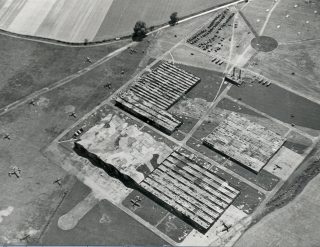
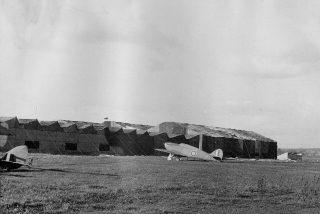
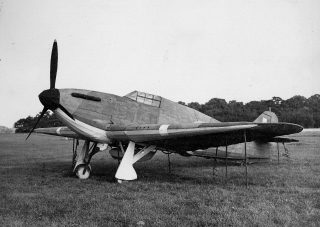
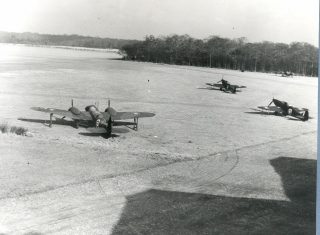
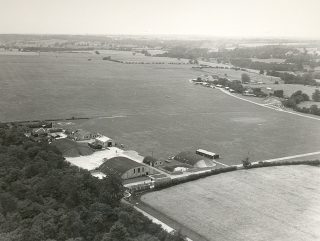
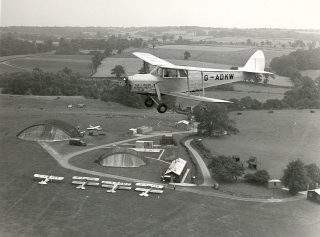
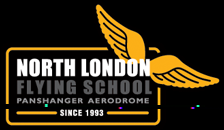






Add your comment about this page
Graham, I wrote the original article. You may be interested to know that I used to live in your grand fathers house in Welwyn Garden City from 1988 until we moved in 2002. He was Baron Derek de Sarigny and was a flying instructor at Panshanger and had his own aircraft, an Auster. Sadly I never met Derek or Rudi.
Well Chris if you knew about the Tigers & Austers that were at Panshanger you may well have known my grand father Derek, who incidentally taught my father to fly, & grand mother Rudi who would often be selling teas in the club house.
Good to see the airfield is remembered had my first trip in tiger moth auster and beautiful miles Gemini belonging to the creasy family of WGC. Also remember loads of miles magister sat bottom of airfield next to fuel storage area. One was latter dumped at back of howlands in swamp for kids to play on no engines fitted sad to hear its housing.
On 14 September 2014, the North London Flying School held a final day of events before they moved to North Weald airfield. This followed the decision by the owners of the Panshanger Airfield land to sell the land. It is now anticipated that the land will used for more housing.